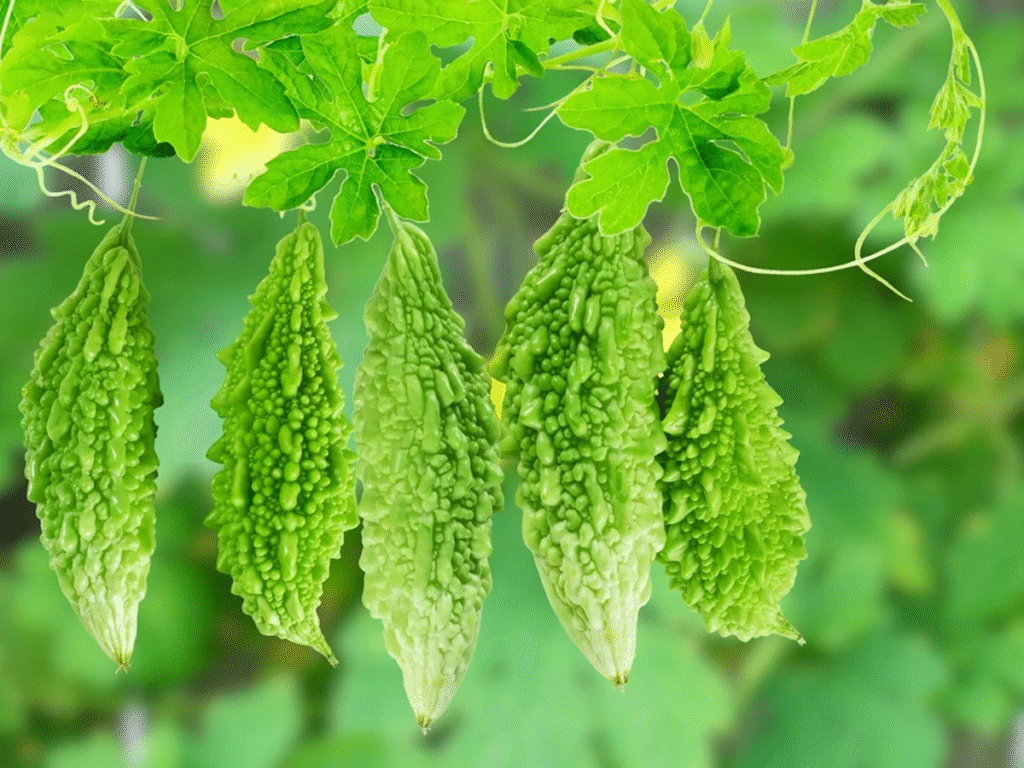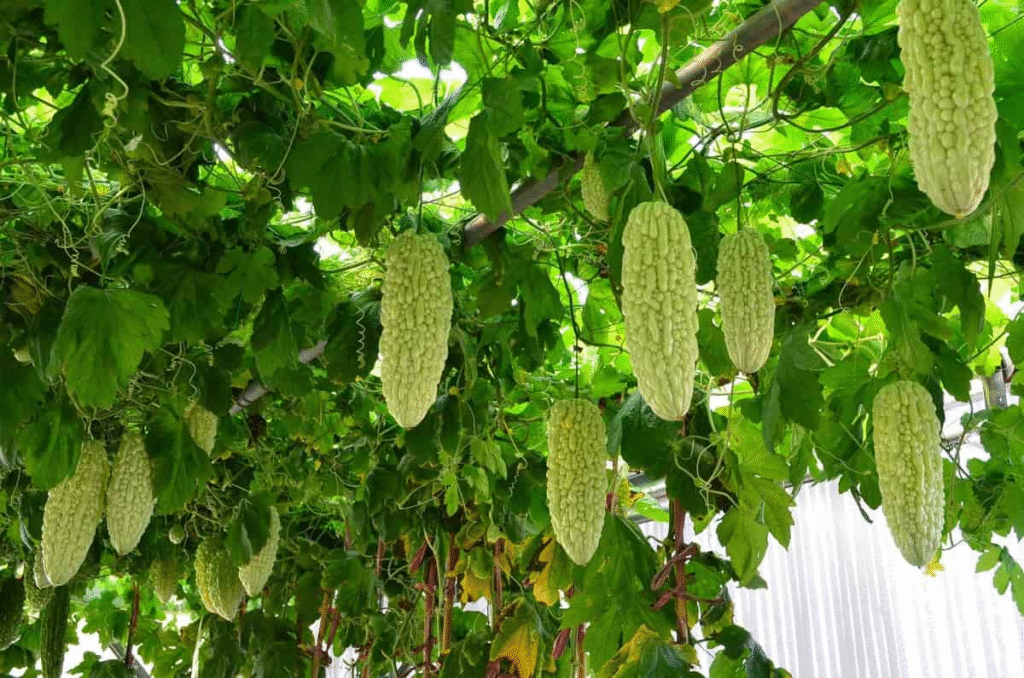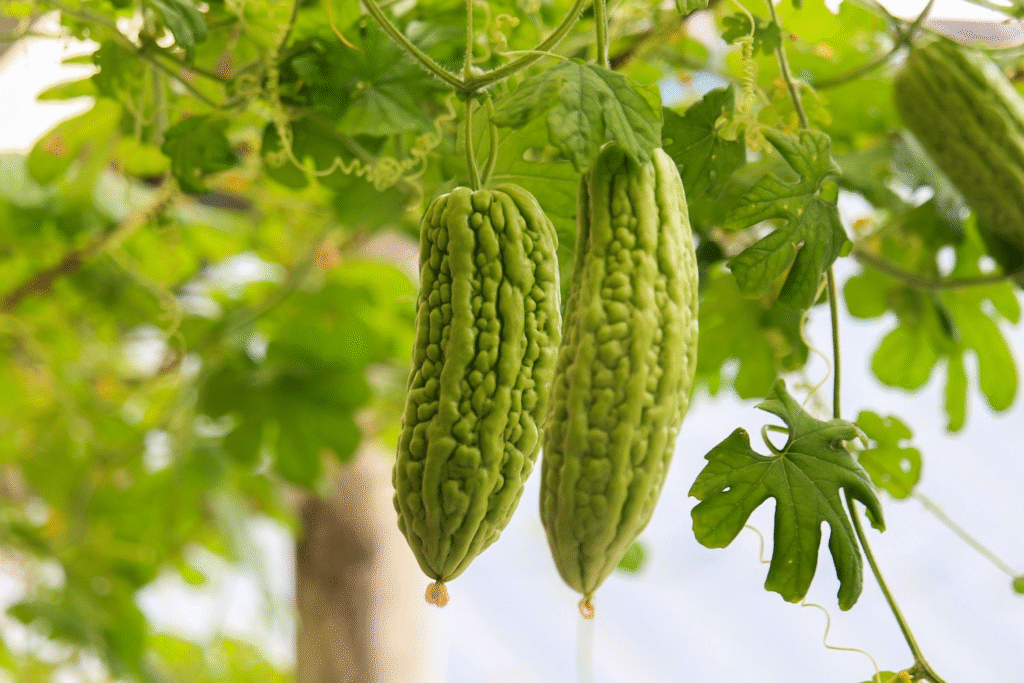How to Grow Bitter Gourd: Complete Guide for Home Gardeners
Bitter gourd (Momordica charantia), also known as bitter melon or bitter squash, is a unique vegetable treasured for its distinctive flavor and impressive health benefits. While its taste might be an acquired one, growing this nutritional powerhouse at home can be incredibly rewarding. Whether you have a spacious garden, a small balcony for container gardening, or just a sunny windowsill, you can successfully cultivate this tropical vine and enjoy its remarkable benefits year-round.
This comprehensive guide will walk you through everything you need to know about growing bitter gourd in various settings across the United States, from seed selection to harvest and beyond.
Understanding Bitter Gourd
Before diving into cultivation methods, it’s helpful to understand what makes bitter gourd unique among vegetables in the US market.
Bitter gourd belongs to the Cucurbitaceae family, alongside cucumbers and squash. However, its warty, ridged appearance and intensely bitter flavor set it apart. According to the USDA Agricultural Research Service, bitter gourd contains compounds like momordicin and charantin that contribute to its distinctive bitterness and potential health benefits.
Native to tropical regions of Asia, Africa, and the Caribbean, bitter gourd has gained popularity in the United States as interest in diverse cuisines and functional foods has grown. Today, you’ll find bitter gourd in specialty markets and increasingly in mainstream grocery stores, particularly in areas with significant Asian populations.
Benefits of Growing Your Own Bitter Gourd
Growing your own bitter gourd offers numerous advantages:
- Freshness: Harvest at peak ripeness for maximum flavor and nutrition
- Cost-effectiveness: Save money compared to specialty market prices
- Variety selection: Choose from numerous cultivars not commonly available commercially
- Organic growing: Control what goes into your food
- Satisfaction: Experience the joy of growing a unique vegetable from seed to harvest
Growing Conditions for Bitter Gourd
Bitter gourd thrives in specific conditions that you’ll need to replicate whether growing outdoors or indoors:

Climate Requirements
Bitter gourd is a warm-season crop that performs best in:
- USDA Hardiness Zones 8-11
- Temperatures between 75-85°F (24-29°C)
- Full sun exposure (at least 6-8 hours daily)
- High humidity levels
For gardeners in cooler regions (Zones 3-7), bitter gourd can still be grown successfully with proper timing and possibly some season extension techniques.
Soil Requirements
For optimal growth, bitter gourd needs:
- Well-draining, loamy soil
- pH level between 5.5 and 6.7
- Rich organic matter content
- Consistent moisture without waterlogging
How to Grow Bitter Gourd from Seeds
Starting bitter gourd from seeds is economical and gives you access to more varieties. Here’s a step-by-step approach:
Seed Preparation
- Selection: Choose high-quality seeds from reputable suppliers. Look for varieties suited to your climate.
- Scarification: Bitter gourd seeds have hard coats. Increase germination rates by:
- Soaking seeds in warm water for 24 hours before planting
- Lightly filing or nicking the seed coat with sandpaper
- Pre-sprouting: For better germination rates, place seeds between damp paper towels in a warm location (80-85°F/27-29°C) until they sprout (typically 5-7 days).
Planting Schedule
| Planting Zone | Spring Sowing Date | Fall Sowing Date | Days to Germination | Days to Maturity |
|---|---|---|---|---|
| Zone 3-5 | 4-6 weeks before last frost (indoors) | Not recommended | 5-10 days | 75-90 days |
| Zone 6-7 | 3-4 weeks before last frost (indoors) | Not recommended | 5-8 days | 70-85 days |
| Zone 8-9 | After last frost (direct sow) | Mid-summer | 4-7 days | 65-80 days |
| Zone 10-11 | Early spring or year-round | Year-round | 3-7 days | 60-75 days |
Direct Sowing Outdoors
If you’re in Zones 8-11 with warm soil temperatures:
- Prepare garden beds with compost and organic matter
- Plant prepared seeds 1/2 inch deep
- Space seeds 12 inches apart in rows 3-4 feet apart
- Water thoroughly after planting
- Keep soil consistently moist until germination
- Thin seedlings to 18-24 inches apart when they develop true leaves
Starting Seeds Indoors
For cooler regions or to get a head start:
- Start seeds 4-6 weeks before your last spring frost date
- Use biodegradable pots (3-4 inch) to minimize root disturbance when transplanting
- Fill with high-quality seed starting mix
- Plant 2-3 seeds per pot, 1/2 inch deep
- Keep soil temperature at 80-85°F (27-29°C) using a heat mat if necessary
- Place under grow lights or in a very sunny window
- Maintain consistent moisture
- Thin to the strongest seedling per pot
Growing Bitter Gourd in Containers
Don’t have garden space? No problem! Bitter gourd grows remarkably well in containers:
Container Selection
Choose:
- Large containers (minimum 5-7 gallons per plant)
- At least 12 inches deep for proper root development
- Material with good drainage (terracotta, fabric pots, plastic with drainage holes)
Potting Mix
Create a nutrient-rich mix:
- 60% high-quality potting soil
- 20% compost
- 10% perlite or vermiculite for drainage
- 10% coco coir for moisture retention
Container Growing Steps
- Fill container with potting mix, leaving 1-2 inches at top
- Plant 2-3 prepared seeds at 1/2 inch depth
- Water thoroughly
- Place in full sun location
- Thin to strongest seedling when plants have 2-3 true leaves
- Install trellis or support structure (bitter gourd is a climbing vine)
- Keep soil consistently moist but not soggy
- Fertilize every 2-3 weeks with balanced organic fertilizer
Growing Bitter Gourd Indoors
Yes, you can grow bitter gourd entirely indoors with the right setup:

Indoor Growing Requirements
- South or west-facing window receiving at least 6 hours of direct sunlight
- Alternatively, use full-spectrum LED grow lights (14-16 hours daily)
- Ambient temperature of 75-85°F (24-29°C)
- Humidity of 50-70% (consider a humidifier in dry climates)
Indoor Growing Steps
- Choose compact bitter gourd varieties suited for containers
- Use 7-10 gallon containers with excellent drainage
- Provide strong support system (tomato cage or trellis)
- Hand-pollinate flowers (bitter gourd has separate male and female flowers)
- Ensure good air circulation to prevent diseases
Plant Care and Maintenance
Trellising
Bitter gourd is a vigorous climber that requires support:
- Install a sturdy trellis, fence, or arbor before planting
- Train young vines to climb by gently tying shoots to support
- For container plants, use a tomato cage or build a tepee-style trellis
Watering
Proper watering is crucial for bitter gourd success:
- Keep soil consistently moist but never waterlogged
- Water at soil level to avoid wetting foliage
- Apply approximately 1 inch of water weekly (more during hot, dry periods)
- Use drip irrigation or soaker hoses for efficient watering
- Mulch around plants to retain moisture and suppress weeds
Fertilization
Bitter gourd is a heavy feeder:
- Before planting, incorporate compost or well-rotted manure
- Apply balanced organic fertilizer (like 5-5-5 NPK) every 3-4 weeks
- Switch to a phosphorus and potassium-rich fertilizer (like 3-6-6) when flowering begins
- Consider supplementing with liquid seaweed or compost tea monthly
Pruning
Strategic pruning improves yield and plant health:
- When vines reach 1-2 feet, pinch the growing tip to encourage side shoots
- Remove yellowing or diseased leaves promptly
- Thin excessive foliage to improve air circulation
- Limit vines to 5-6 main runners per plant for container-grown plants
Pollination
Bitter gourd requires proper pollination to set fruit:
- Plants produce separate male and female flowers on the same vine
- Female flowers have a tiny fruit-like swelling at the base
- Natural pollinators like bees typically handle outdoor pollination
- For indoor or greenhouse plants, hand-pollinate in the morning:
- Identify newly opened male and female flowers
- Remove a male flower
- Remove petals to expose stamens
- Gently brush pollen onto the stigma of female flowers
Pest and Disease Management
According to the USDA National Institute of Food and Agriculture, implementing integrated pest management practices can help you maintain healthy bitter gourd plants while minimizing chemical use.
Common Pests
- Cucumber beetles: Use floating row covers and remove by hand
- Aphids: Spray with strong water stream or insecticidal soap
- Spider mites: Increase humidity and use neem oil applications
- Fruit flies: Set traps and remove affected fruit immediately
Common Diseases
- Powdery mildew: Improve air circulation and apply fungicides if necessary
- Downy mildew: Avoid overhead watering and apply copper fungicide preventatively
- Fusarium wilt: Use resistant varieties and practice crop rotation
- Viral diseases: Control insect vectors and immediately remove infected plants
Harvesting Bitter Gourd
Timing is crucial when harvesting bitter gourd:

When to Harvest
- Harvest fruits when they’re immature—bright green with distinct ridges
- Size depends on variety, but typically 4-6 inches long
- Look for firm texture and vibrant color
- Pick before color turns yellow (overripe bitter gourds are extremely bitter)
How to Harvest
- Use clean, sharp scissors or pruning shears
- Cut the stem about 1/4 inch above the fruit
- Harvest frequently (every 2-3 days) to encourage continuous production
- Handle gently to avoid bruising
Saving Seeds
To maintain your own seed supply:
- Allow selected fruits to fully ripen on the vine until they turn orange or yellow
- Harvest and let them further ripen off the vine for 1-2 weeks
- Cut open and scoop out seeds with their red arils
- Rinse and remove the red covering
- Dry thoroughly for 1-2 weeks in a warm, well-ventilated area
- Store in paper envelopes in a cool, dry place
Bitter Gourd Varieties for US Gardeners
Several varieties perform well in different US growing conditions:
- China White: Mild bitterness, good for beginners
- Hybrid Green Long: High-yielding, disease-resistant
- Thai Green: Compact plants suitable for containers
- India Green Queen: Heat-tolerant with consistent production
- Japanese Climbing: Excellent for trellising in small spaces
Conclusion
Growing bitter gourd at home—whether in your garden, in containers, or indoors—is a rewarding experience that connects you with diverse food traditions while providing nutritional benefits. With proper attention to its growing requirements, you’ll be harvesting this unique vegetable and incorporating it into your culinary adventures in no time.
Remember that bitter gourd may take some time to adapt to your specific growing conditions, so don’t be discouraged if your first attempt isn’t perfect. Each growing season brings new knowledge and improved results.






